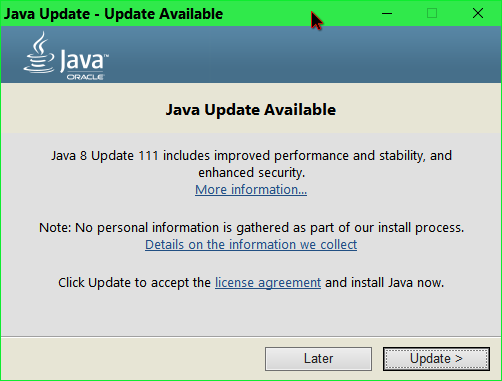
Write Java code: Next, write Java code using any text editor or integrated development environment (IDE) like Eclipse, NetBeans, or IntelliJ IDEA.Install JRE: First, you need to download and install the latest version of JRE from the official Java website or FileHorse.Deployment: It provides an easy and convenient way to deploy Java programs on various platforms, such as desktops, servers, and mobile devices.Internationalization: It provides support for internationalization and localization, which allows Java programs to run in different languages and regions.Platform Independence: Java programs that run on JRE are platform-independent, which means that they can run on any platform that has JRE installed, regardless of the underlying hardware or operating system.Automatic Memory Management: It includes automatic memory management, which means that the JVM automatically manages the allocation and deallocation of memory for Java programs.


It includes features such as sandboxing, code signing, and permission-based access control.

Many cross-platform applications also require Java to operate properly.

In addition, two key deployment technologies are part of the JRE: Java Plug-in, which Enables Applets to Run in Popular Browsers and Web Start, which deploys standalone applications over a network. It provides the libraries, the Java Virtual Machine, and other components to run applets and applications written in the Java programming language.


 0 kommentar(er)
0 kommentar(er)
